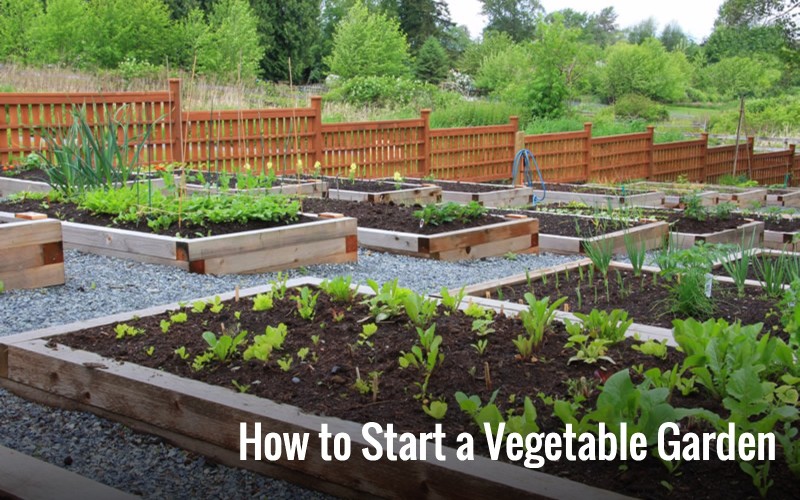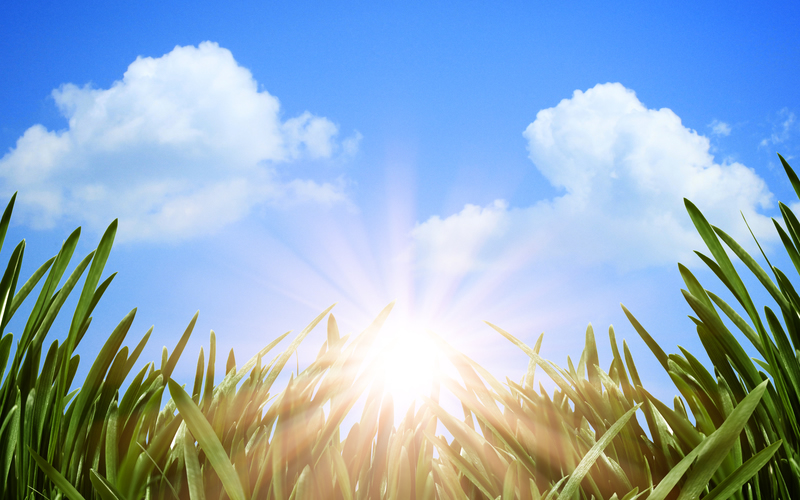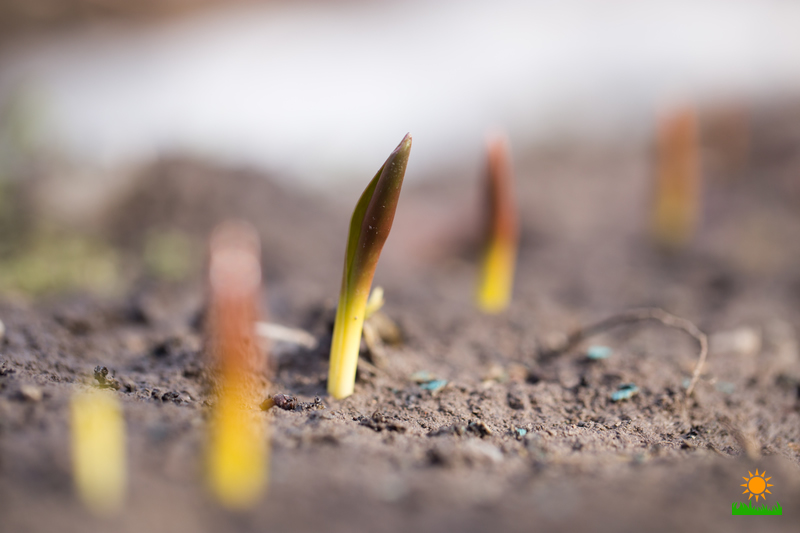
As more and more people become conscious not only of what they are eating, but also where it comes from, gardening is becoming more popular. Planting your own vegetable garden has many benefits. Produce can be canned or frozen for the winter months, which helps to keep your grocery bills down and also ensures that your family has fruits and vegetables to eat during the winter.
You can also plant fruits and vegetables that may not be plentiful in your area, which opens up your palate to different kinds of foods. And there is a certain satisfaction that comes from knowing that you’ve worked hard to provide for your family.
When you first start a garden, you need to be mindful of three things: Sun, soil and water.
How to Start a Vegetable Garden for Beginners Guide
1. Sun

Vegetable plants need direct sunlight in order to thrive. For plants to do well, you need to choose a spot for your garden that ensures at least six to eight hours of direct sunlight. Take into account things that could potentially block the sun (buildings, trees, etc.) and try to avoid them as much as possible.
Be creative–the best spot for your garden may not be in the back yard.
2. Water

Plants, like people, need water to survive. Your garden will need watered every day, either by you or through natural elements. If it has been raining steadily, you won’t need to water your garden that day, however one or two days without a drink will see your plants starting to droop–especially when it is very hot outside. Try to water in the morning and evening, as watering during the middle of the day, when the sun is directly overhead a temperatures are high, can result in burning the leaves on your plants and potentially killing them.
Be careful to give your plants the right amount of water. Too little means that they will not be able to thrive and too much can actually drown them. Your county extension office can give you an idea of how much water your plants will need based on the weather conditions where you live.
3. Soil

The richer the soil, the better your plants will grow when you start a container vegetable garden. There are different types of soil, and different plants grow better in each one. Your soil will most likely be sandy, clay-based or rich, dark and fertile. Once you have established what kind of soil you have, take some time to
Once you have established what kind of soil you have, take some time to research what fruits and vegetables will grow best there.
Factors to consider with soil types.
- Clay. Soil that has a high amount of clay in it can make it difficult for plants to spread their roots, and depending on how thick it is, water may have a hard time penetrating the soil.
- Sandy. When soil is too sandy, water can pass through easily and may drain so quickly that plants do not have a chance to get to the water before it’s gone. Sandy soil can also be loose and unstable, making it difficult for plants to develop a strong root system.

Shared via Anglian Home.
4. Premixed Compost
Whether your soil is too sandy or has too much clay in it, there is a solution. Adding premixed compost (available at any home and garden or garden supply store) will help to balance the soil and provide optimum growing conditions for your plants.
If you are not sure what kind of compost you need, try taking a sample of soil with you–they should be able to look at it and identify what issues need to be corrected.
5. Space
Think and plan ahead how much space you’d need for your Veggie Planning. Don’t forget to leave some room around when planting new Veggies in your Yard.
During autumn, make sure that you blow off your leaves and clear your area regularly.
Conclusion

Putting in a garden is not difficult. Choose the right location, making sure there is enough direct sunlight. Water frequently, and try to do it when the sun is not directly overhead to avoid burning your plants. Analyze your soil, or have it analyzed, and add enough premixed compost to turn it into the right kind of soil for the plants you are trying to grow. Feel free to check some extra tips for creating a Garden at Sahmreviews.com
Gardening is an activity that the whole family can participate in. Children can be taught to weed, and they love to go out and pick vegetables for dinner. And even picky eaters are more likely to eat their vegetables when they have been a part of the growing process. Don’t forget to use a veggie chopper to make yummy salad with your hard-work effort.
As long as you take the time to do it right, your garden can provide you and your family with year-round goodness and the satisfaction of knowing you did it yourself.
Check out our best snow blower buying guide with other gardening and lawn care tips.
Reference:
